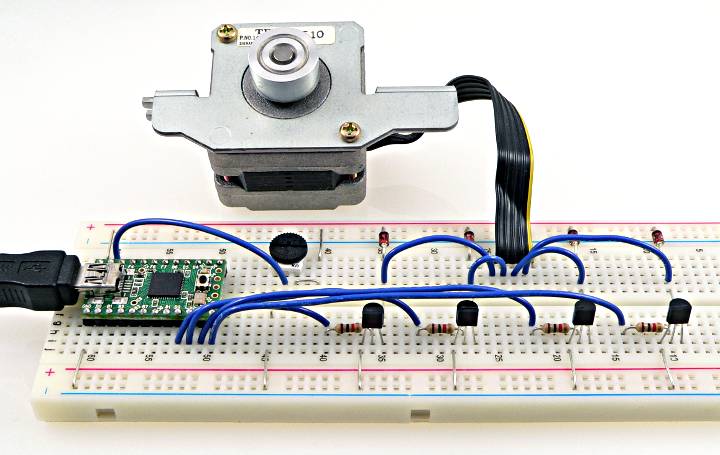

- #Arduino teensy driver drivers
- #Arduino teensy driver update
- #Arduino teensy driver driver
- #Arduino teensy driver code
The easiest way to use SmartMatrix is to use the SmartMatrix Shield v4 from Louis Beaudoin. Hardware, Teensy 3.6 and SmartMatrix Shield v4
#Arduino teensy driver code
The goal was for me to be able to re-use that code and make it work on both FastLED backends and SmartMatrix backends, which why I wrote SmartMatrix::GFX offers a GFX compat layer that is virtually identical to my FastLED::NeoMatrix library and allows you to run the same code onto of either FastLED or SmartMatrix supported panels. I have a reasonble collection of demos I've gathered (a few I wrote myself), here: and they use a combination of those 3 APIs. So, SmartMatrix is great, but I have all this code that relies on one or more of those APIs:

High color depth 24bpp or higher (which honestly is more than I need, 24bpp is more than most panels can probably reasonably show and 16bpp would likely be enough for my use).Best support for chaining panels (up to 128x128 on teensy, and maybe 64x128 on ESP32 before it runs out of DMA RAM).
#Arduino teensy driver driver
This leaves us with the most complete driver of them all, Smartmatrix. This driver seems unsupported and probably not worth your attention when you have SmartMatrix (teensylc branch) or mrfaptastic/ESP32-RGB64x32MatrixPanel-I2S-DMA
#Arduino teensy driver drivers

Options I looked at and weren't suitable: This limits the list of reasonble CPUs for higher resolutions to teensy 3.6 and ESP32, which also removes the multiple slower and/of inefficient drivers out there. The LEDs need to be refreshed very quickly to avoid visible flickering.

With 32圆4 panels, or even 64圆4 panels, that's a lot of pixels to push serially via shift registers and address lines to select the line you've currently pushed all those columns for.
#Arduino teensy driver update
RGBPanels are a totally different technology based on row scan technology, pretty much like the 8x8 matrices I wrote a scanning driver for but with a built in shift register to load up all the column for each color, multiplied by 2 as for historical reasons you can update 2 halves of the panel separately. What allowed me to switch were those flexible P4 RGB Panels from Azerone: P5) with nepixels, there is no such panel I could buy today and I wasn't really interested in fabbing my own, so I switched to RGBPanels. While it's technically possible to get 0.5cm pitch (i.e. I made the best of it, but I knew that I wanted more pixels. better than nothing), 32x24 resolution isn't that much to display cool stuff. My shirt was only 768 pixels per side (32x8x3) which cost $80 per side. However, the main problem I had was the limited pixel density of those neopixels and the price per pixel given that each pixel has a very small computer chip attached. This allowed me to do my Party shirt v3 based on a NeoPixel Matrix Last year, I wrote FastLED::NeoMatrix to let me run Neopixel Matrices made out of pre-made panels arranged as a bigger panel. More blah-blah & rationale for SmartMatrix::GFX This page that shows how I built my EDM Festival and Burning Man LED Pants and Shirt v4 on ESP32 with RGBPanels and SmartMatrix::GFX using this library. It supports these 4 APIs seemlessly and concurrently in the same code: Sure, there you go: What is it? is a zero copy, zero extra buffer frontend to Smartmatrix, which is the best arduino API driver for RGB Panels.


 0 kommentar(er)
0 kommentar(er)
